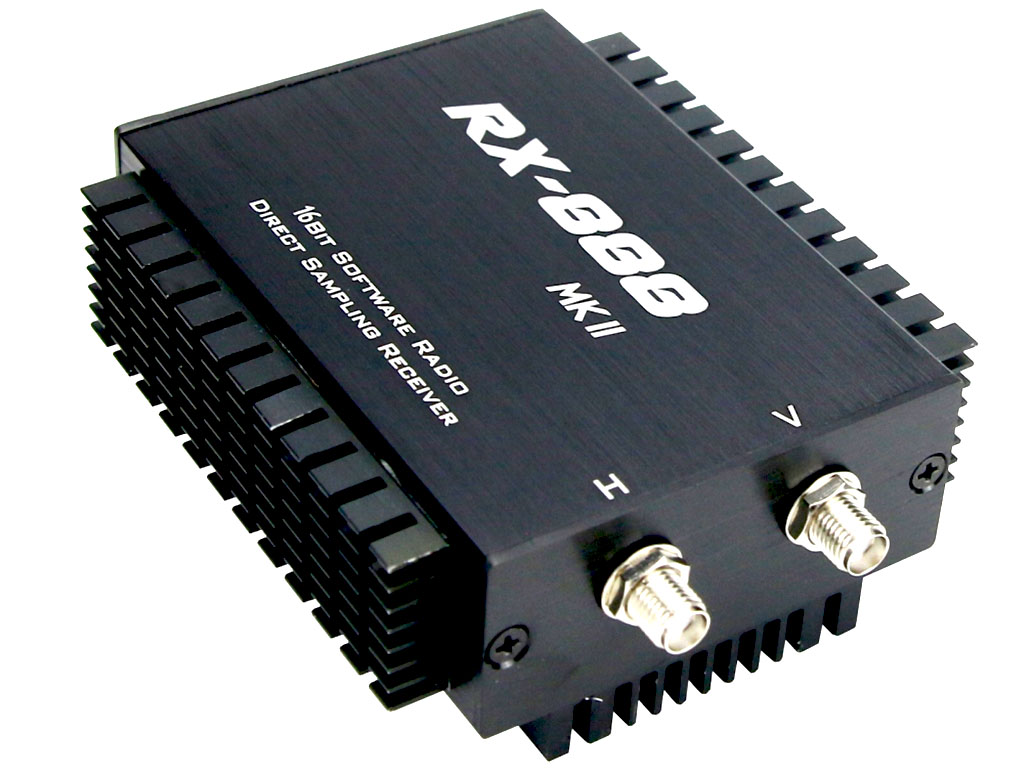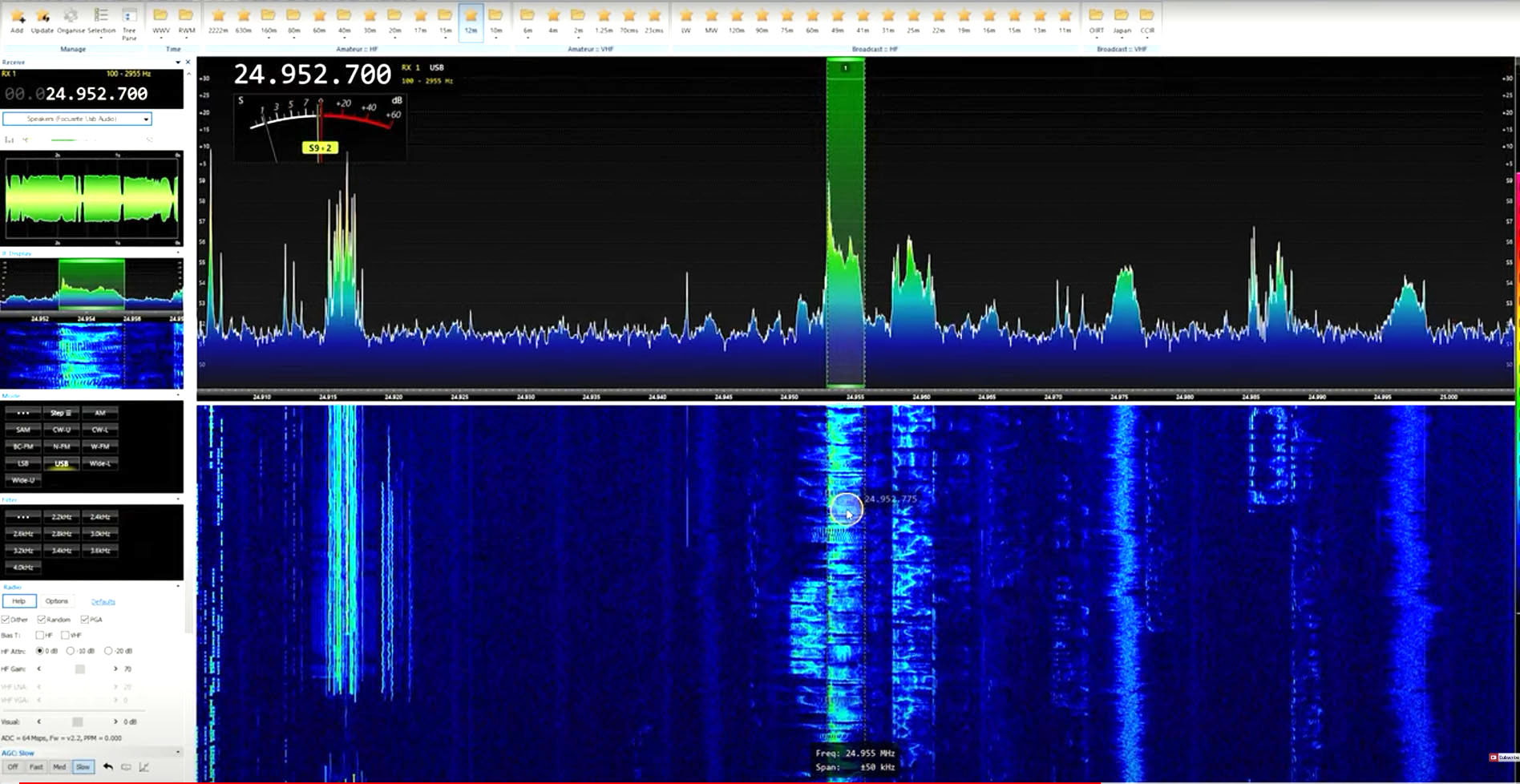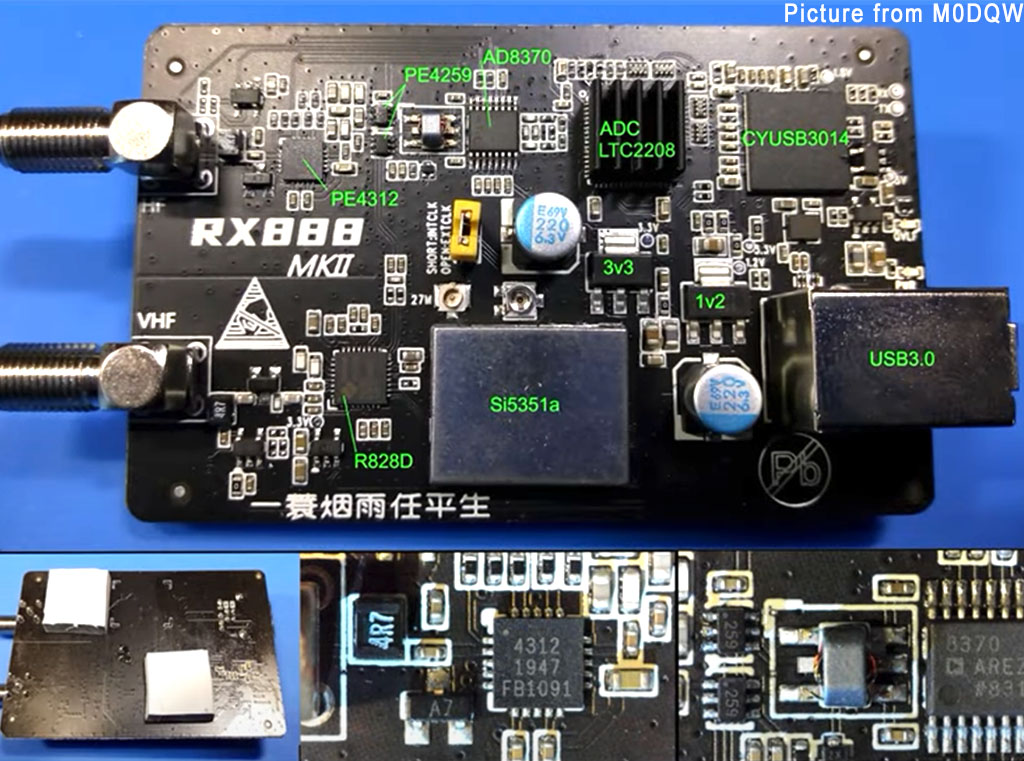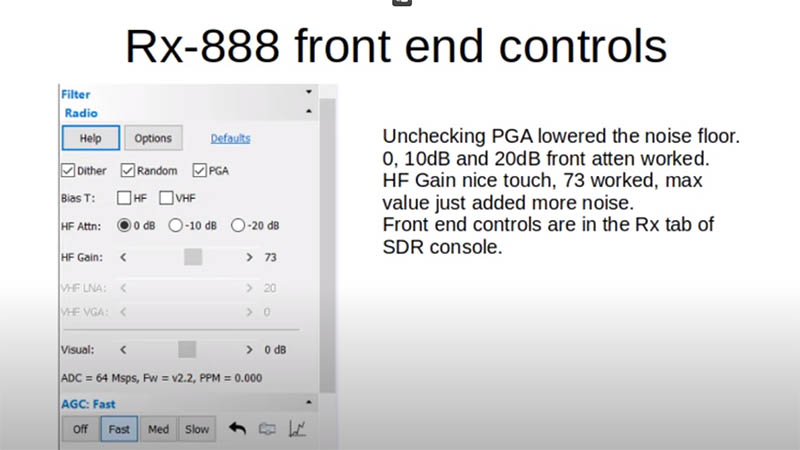
Some truths About RX888 MK2 SDR
Some truths About RX888 MK2 SDR
RX888 SDR MK2 is a high-performance SDR that offers a wide range of features and capabilities. It is designed for both amateur and professional use, and it is compatible with a variety of software programs. One of the most impressive features of RX888 SDR MK2 is its wide frequency range, which covers from 100 kHz to 2 GHz. This makes it a versatile option for a wide range of applications, from monitoring the HF, VHF, and UHF bands to decoding digital signals and more. Another great feature of RX888 SDR MK2 is its high dynamic range, which allows you to receive weak signals even in noisy environments. This is thanks to its 16-bit ADC, its digitally controlled attenuator PE4312 and variable gain amplifier in the receiver’s front stage.
1. BBRF103 SDR from IK1XPV, and the RX888 SDR, any differences?
The BBRF103 is an open-source software-defined radio (SDR) project developed by Oscar Steila (IK1XPV) 1. The project includes hardware schematics, PCB designs, and firmware source code for a high-performance SDR. The RX888 is a software-defined radio that is based on the BBRF103 design. It has a 16-bit ADC and a tuning range from 1 kHz up to 1.8 GHz, with a bandwidth of up to 64 MHz between 1 KHz to 64 MHz and 10 MHz between 64MHz – 1700MHz.
In consequence, the BBRF103 is an open-source SDR project, while the RX888 is a commercial SDR product based on the BBRF103 design. More about BBRF103 SDR, check the IK1XPV’s github repository.
2. Compared to its ancestor RX-888 SDR, some conspicuous improvements made on RX-888 MK2:
The PCB layout of the RX-888 MKII is similar to the RX888, but it includes several upgrades such as a PE4312 input attenuator, and an AD8370 VGA. The VHF tuner R828D replaces the R820T2, and the added transformer connects in a balanced way to the R828D IF outputs. The receiver also supports an external reference 27 MHz clock. While the RX-888 MK2 has greater attenuation and VGA amplifier range, it may have slightly higher spurs than the RX888 due to the AD8370’s higher distortion, but the major advantage for using AD8370 instead of LTC6401-20 is its variable gain of up to 20 dB, which will significantly improve the dynamic range of a receiver if you live in a noisy RF environment. Here is a teardown of RX-888 SDR MK2 by IK1XPV, go and read.
3. Testing of the RX-888 MK2 made by TheGmr140 on Youtube
There is a test video made by “TheGmr140” on Youtube, and you could get a clear idea on RX888 MK2, both of the advantages and disadvantages. This is a test of RX-888 SDR MK2 from the technical aspect, without focusing on the basic topics like unboxing, installing and using. Here are the conclusions:
- RX-888 MK2 has spurs at 8MHz, 16MHz, 24MHz. The spur at 24MHz is the strongest one, so it’s not a good unit for those who is interested in picking up the signals around 24MHz.
- The RX-888 MK2 has a functional front end controls, where you could control the HF attenuator gain, HF gain and the PGA option, but please notice the side effect when adjusting up the amplifier gain, that it will also add up the noise floor.
- It’s possible to calibrate the ADC sampling frequency by software.

- Noise floor is about -130dBm.
- It works in normal temperature, but a simple fan is a good idea.
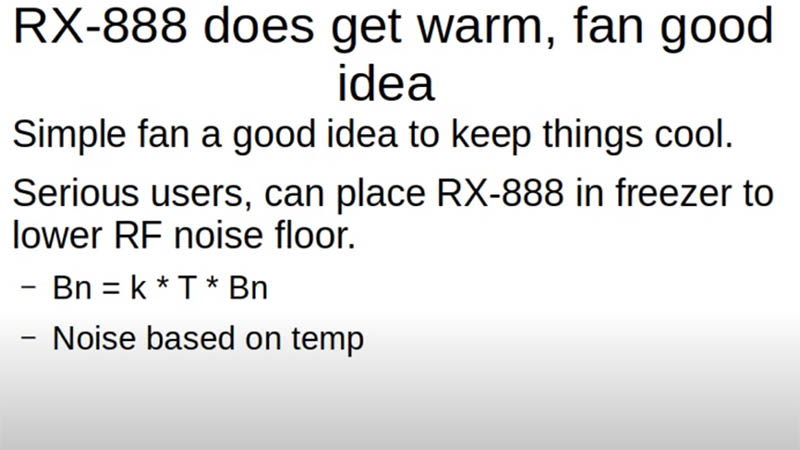
- An external LPF to HF port is a must to get rid of alias signal.
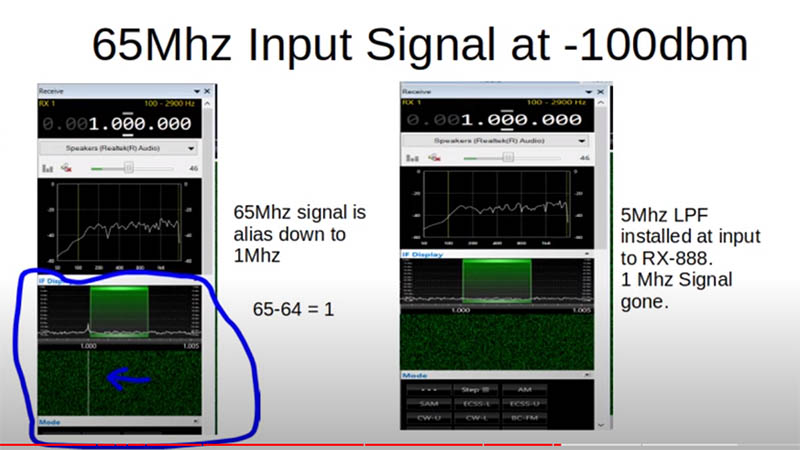
- A good SDR for under $200 with 32MHz bandwidth, you could use it with a downconverter to get other frequencies like WiFi, Radar, or other RF communication signals down.
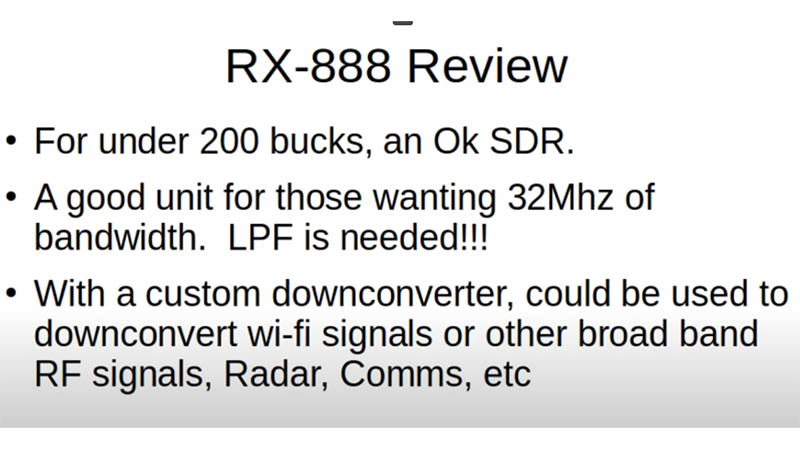
4. PC Considerations:
In order to have a smooth running of RX-888 MK2, a good (powerful) PC is needed. We would highly recommend to use it on a PC with i5 or i7 installed at least quad cores in recent 4-5 years, the RAM should be at least 8G, as it really eats up memory when running in 32MHz bandwidth. Since the data comes through the USB 3.0 cable, please be sure your PC has a USB3.0 port before buying a RX-888 SDR. If you have a PC of OLD CPUs with a USB3.0 port, it’s OK to work with RX-888 MK2 in a low bandwidth mode like 1 or 2MHz. The lower bandwidth, the lower CPU power used.
5. Some other comments from buyers:
- https://www.reddit.com/r/RTLSDR/comments/zj14j5/rx888_mkii_is_an_amazing_sdr_and_even_seems_to/
- https://www.hfunderground.com/board/index.php?topic=72973.0
